Epilepsy is a central nervous system disorder characterized by sudden recurrent episodes of sensory disturbance, loss of consciousness, or convulsions, and it’s associated with abnormal electrical activity in the brain. Seizures are defined as sudden attacks of illness, but we usually think of a seizure as an attack of epilepsy, also called a fit.
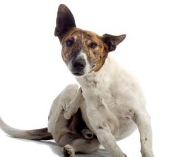 Signs of a Seizure:
Signs of a Seizure:
- Stiffness
- Loss of consciousness
- Sudden, violent shaking
- Muscle twitching or limb shaking
- Staring or dilated pupils
- Salivating or foaming
- Urinating
- Groaning
Epilepsy and seizures are becoming a common problem in dogs, and are somewhat unusual in cats. An epileptic seizure is disturbing to watch, but even more disturbing for your dog or cat because your pet doesn’t know what’s happening to its body.
There are many possible causes of epilepsy. To properly treat the condition, you have to put effort into finding the source of the problem. Holistic  veterinarians believe that vaccinations are directly linked to epileptic seizures. They also agree that improper diet is a cause. Mineral deficiencies, vitamin deficiencies, and certain toxic substances can trigger a fit. The following is a list of potential causes:
veterinarians believe that vaccinations are directly linked to epileptic seizures. They also agree that improper diet is a cause. Mineral deficiencies, vitamin deficiencies, and certain toxic substances can trigger a fit. The following is a list of potential causes:
- Vaccinations. Well documented studies show that epilepsy has been triggered by annual shots, particularly rabies and distemper. Allergic encephalitis is a sometimes hidden inflammation of the brain caused by a reaction to proteins and organisms in the vaccine. Symptoms of mild encephalitis are headache, fever, confusion, drowsiness, and fatigue. When our pets have these symptoms, we don’t usually notice, or we don’t think it’s anything serious. But when the allergic encephalitis becomes more advanced, say with another dose of vaccinations, seizures are one of the symptoms that we do take notice of.
- Genetic factors. Your pet’s brain is constantly transmitting energy from one neuron to another. Sodium ions, calcium ions, and potassium ions send electrical charges through channels in the brain.
 Seizures may result when there is something genetically wrong with this encephalic system. Pets with epilepsy ought to be neutered or spayed. Unfortunately, though, the problem is worsened by intensive breeding and the breeders may not care and may not tell their buyers. Inbreeding is a known proliferator.
Seizures may result when there is something genetically wrong with this encephalic system. Pets with epilepsy ought to be neutered or spayed. Unfortunately, though, the problem is worsened by intensive breeding and the breeders may not care and may not tell their buyers. Inbreeding is a known proliferator. - Low blood sugar. Hypoglycemia, symptomized by fatigue and stress, may instigate seizures. Scientists estimate that up to ninety percent of all epileptics have low blood sugar.
- Vitamin and mineral deficiencies. Nutrients that appear deficient in epileptics are vitamin B6, vitamin A, folic acid, vitamin D, zinc, taurine, magnesium, potassium, and calcium. In a May of 1996 article in the Journal of the American Holistic Veterinary Medical Association, Dr. Martin Schulman reported that a
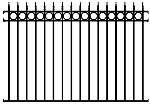 common contributor to seizures is a lack of minerals. He found that his patients with epilepsy had a remarkably high correlation with pica, a disorder characterized by symptoms such as obsessive licking of wrought iron fences. In dogs, this is cured when the diet improves.
common contributor to seizures is a lack of minerals. He found that his patients with epilepsy had a remarkably high correlation with pica, a disorder characterized by symptoms such as obsessive licking of wrought iron fences. In dogs, this is cured when the diet improves. - Brain tumors. Both malignant and benign brain tumors can cause seizures.
- Head trauma. A blow to the head from an accident or abuse can lead to life-long seizures.
- Worms. Internal parasites release toxins that have an adverse effect on the central nervous system.
- Lead, chemicals, additives and poisons. Toxic metals such as lead, copper, mercury, and aluminum have also been known to cause seizures. Some pets are very sensitive to such metals, and exposure is
 common through aluminum cookware, auto exhaust, industrial pollution, household cleaners and copper water pipes. Flea products and yard sprays are also toxic to pets.
common through aluminum cookware, auto exhaust, industrial pollution, household cleaners and copper water pipes. Flea products and yard sprays are also toxic to pets. - Kidney disease. When the kidneys are damaged, they lose their ability to remove toxins from the body, causing a toxic buildup, which can lead to an epileptic disorder.
- Liver disease. The liver is a vital organ with a number of functions including detoxification and protein synthesis. Damage to the liver can result in a nervous system disorder.
- Distemper. Not just the disease, but the treatment can cause seizures.
- Infections, cysts and cancer.
- Malnutrition during the mother’s pregnancy.
The following is a list of triggers that may bring on a seizure if your pet has epilepsy. Every case is different, though, and not all of these irritants will instigate a seizure.
| Paint fumesHair Spray
Mold Eating feces Wool Heartworm pills Cigarette smoke Pollution Nitrates Carpet powders Air fresheners Fabric softeners Dryer sheets Salt Sugar Ferrous Sulfate Copper Sulfate Calcium Iodate Loud noises Scented candles Blinking lights Pine cleaners Flea products Toxic shampoos Stress Worms Head trauma |
VaccinationsBHA – used in pet foods
BHT – used in pet foods Ethoxyquin – used in pet foods Red food dye Plastic bowls Painted/shellacked bowls Monosodium Glutamate Lyme encephalitis Paint chips from lead based paint Excessive exercise Overheating Abuse or neglect Rawhides – some are dipped in bleach Cheap painted pet toys Vitamins with high sodium level Fumes from cleaners Fumes from bleach Inconsistent routine Fungi, bacteria, and germs Mobile phones Low quality pet treats Low quality dry food Low quality canned food Dust Lead Crabgrass |
Also, be aware that foam is made from petroleum-based chemicals. High levels of toxins, like arsenic and phosphor compounds, have been found in memory foam. So be wary of the materials used around your house,  particularly in the areas where your pet sleeps.
particularly in the areas where your pet sleeps.
Additionally, research has shown that more seizures happen in the autumn, perhaps because of increased mold and bacteria in the air.
When a seizure occurs
- Remain calm. This is extremely important because you will prolong the seizure if you scream or get upset.
- If there is a forewarning, give a teaspoon to a tablespoon of honey. In many cases, this will lessen the severity of the seizure.
- Turn off lights, TV, and music. In a quiet, dark room, hold your pet in a comforting, reassuring way. Say positive, calming words such as “everything’s okay.”
Herbal and Naturopathic Help
First and foremost, make sure to eliminate toxins in your house and yard, and on your pet. Throw out cleaners that have toxic ingredients, and replace them 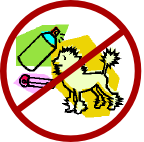 with natural products; there are many available nowadays. Don’t use flea collars, flea sprays, air fresheners, or carpet powders that have toxic ingredients.
with natural products; there are many available nowadays. Don’t use flea collars, flea sprays, air fresheners, or carpet powders that have toxic ingredients.
Research has shown that many of the ingredients commonly found in commercial pet foods cause illnesses, including nervous system disorders. For epileptic pets, you must feed a high quality diet. With dogs and cats suffering from seizures, you have to be especially careful about the ingredients. Nutrition should be focused on preventing the intake of substances that irritate brain tissues.
Normally dogs and cats ought to have organic, raw organ meats about once a week. However, even high quality liver and kidney may contain toxins such as pesticides, antibiotics, hormones, and heavy metals because these are the organs that filter those substances in the body. So don’t feed liver and kidney to an epileptic pet.
Food bowls should be stainless steel, glass, or quality ceramic with no toxic paints or shellacs, and they ought to be cleaned with soap and hot water, or in a dishwasher, after each meal. Give your pet filtered water.
The B vitamins are very important with central nervous system disorders. A vitamin B6 deficiency is commonly linked with seizures, but you want to feed a natural B complex supplement. If you feed only one B vitamin, the body will become deficient in other B vitamins. Liquid colloidal minerals including  zinc, probiotics, and digestive enzymes should also be part of the therapeutic diet.
zinc, probiotics, and digestive enzymes should also be part of the therapeutic diet.
Intravenous vitamin C is a therapy still being researched, but some holistic veterinarians swear by it, particularly when the seizures are brought on by treatments for other conditions. There are documented cases where doctors have cured seizure and other disorders with high doses of vitamin C. Professional medical organizations, however, state that there is no evidence of the efficacy of high dose vitamin C as a treatment, and we don’t advocate using it as a sole treatment. But adding extra vitamin C to your pet’s diet is good. Excess vitamins C and B get flushed out of the body, so you don’t need to worry about a buildup, as you do with fat soluble vitamins.
 Your pet should get at least an hour of exercise each day. However, age and health should be taken into consideration. Do not over exercise older pets, or pets suffering from hypoglycemia, epilepsy, or heart conditions. They still need moderate exercise, but keep in mind that overexertion and stress can trigger a seizure in an epileptic pet.
Your pet should get at least an hour of exercise each day. However, age and health should be taken into consideration. Do not over exercise older pets, or pets suffering from hypoglycemia, epilepsy, or heart conditions. They still need moderate exercise, but keep in mind that overexertion and stress can trigger a seizure in an epileptic pet.
Conventional veterinarians often prescribe the barbiturate, phenobarbital, for epilepsy. If your pet is on that or another drug, talk to a holistic veterinarian. Don’t just make a switch to herbal, naturopathic, or homeopathic treatment on your own. Potassium bromide is often substituted for phenobarbital, and is safer on the liver.
Go to a holistic veterinarian and get a thorough diagnosis. Find out whether the seizures are caused by hypoglycemia, cancer, diabetes, or a disease of the liver, kidney, or thyroid. 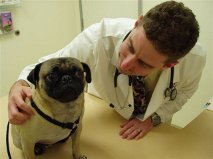 Lyme disease and lead poisoning ought to be ruled out, as well. Lead poisoning can result from licking or eating wood chips on which there is lead paint. Dogs like the sweet taste. When you get regular blood work done, you must specifically ask for a lead poisoning test because it’s not included in normal blood work.
Lyme disease and lead poisoning ought to be ruled out, as well. Lead poisoning can result from licking or eating wood chips on which there is lead paint. Dogs like the sweet taste. When you get regular blood work done, you must specifically ask for a lead poisoning test because it’s not included in normal blood work.
If worms are the problem, your holistic veterinarian can help you with a plan that protects your pet’s body from the effects of the worming medicine. Most naturopaths use B and C vitamins and other supplements.
Some seizures that were caused by allergic reactions to food or environmental pollutants stopped when those triggers were eliminated.
In her book, The Encyclopedia of Natural Pet Care, CJ Puotinen describes the work of American herbalist John Christopher. Dr. Christopher had much success treating epileptics with a tincture of blue cohosh, black cohosh, blue vervain, lobelia, and skullcap. He put the tincture in his patients’ ears, and plugged the ears with cotton, having the patients sleep this way overnight. Doctor Christopher’s son, David, now runs The School of Natural Healing, which was founded by his father.
David Christopher uses his father’s remedy, called B&B tincture, on humans using this dosing:
- Four drops in each ear twice a day
- One dropperful massaged into the skin at the base of the skull every hour during the day
- Two dropperfuls ingested orally three times a day
For your pets, you would vary this schedule proportionately by the animal’s weight. A sixty pound dog, for example, would be given half these amounts. David Christopher advises pet owners to begin with lower dosages, and work their way up to the required amount within one week. The maximum dosage is to be given for three weeks. If the pet has been seizure free during this time, the dosage may be gradually tapered off to two dropperfuls orally once a day. 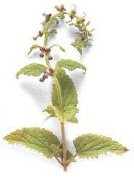 If you’re interested in this therapy, first discuss it with your holistic veterinarian and then check out The School of Natural Healing’s website. Do not use these herbs to treat your pet by yourself. If you’re interested, contact an expert. Used incorrectly, some of the ingredients may be toxic to your pet.
If you’re interested in this therapy, first discuss it with your holistic veterinarian and then check out The School of Natural Healing’s website. Do not use these herbs to treat your pet by yourself. If you’re interested, contact an expert. Used incorrectly, some of the ingredients may be toxic to your pet.
Because stress and overexertion can trigger a seizure in an epileptic pet, herbals that support the body under such conditions are helpful. Skullcap, valerian, oat grass, and passion flower are all appropriate at times when your pet is dealing with anxiety or exhaustion.
Homeopathy
Talk to your holistic or homeopathic veterinarian before starting a treatment plan or discontinuing current medications. The following are some homeopathic treatments that are often quite useful.
If seizures are associated with dilated pupils and throbbing pulse, and the animal feels hot, give Belladonna 30c, two or three pellets, one time. Allow no food an hour before or after treatment. Wait one month. If the seizures have not diminished, discuss other therapies with your holistic veterinarian. If the seizures go away, continue naturopathic treatment as directed by your holistic veterinarian. If the symptoms go away but come back, dose the same way with Belladonna and after one month give one dose of Silicea 30c.
If your pet has symptoms that are similar to those described for Belladonna treatment, but also shows premonitory signs of staggering, particularly falling toward the left side, give Stramonium 30c instead of Belladonna.
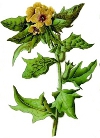 If seizures are preceded by shaking of the head and unsteady gait, indicating vertigo, spasmodic eyelid shutting, and flecks of foam on the mouth, give Hyoscyamus 30c.
If seizures are preceded by shaking of the head and unsteady gait, indicating vertigo, spasmodic eyelid shutting, and flecks of foam on the mouth, give Hyoscyamus 30c.
If seizures are triggered by a vaccination, give one dose of Thuja 30c. Allow no food an hour before or after treatment. Wait one month. If the seizures have not diminished, discuss other therapies with your holistic veterinarian. Because vaccine-induced seizures are often related to encephalitis, Cuprum metallicum 30c may work well after Thuja. Cuprum met is a strong antispasmodic. The symptoms of encephalitis are difficult for a pet owner to notice, but you may see your dog or cat’s head lowered or being pressed against objects.
Also for encephalitis-induced seizures, if your pet’s head and neck is leaning toward one side of the body, try Cicuta virosa 30c.
If seizures are the result of a head injury, and you are sure of this, Arnica 30c once every twelve hours for three treatments may help.
If seizures occur while your pet is sleeping, look into trying Bufo 30c. Other indications for this treatment are a howl preceding the fit, and possibly nose bleeds.
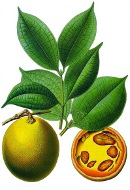 If the trigger to the seizure is anxiety or grief, and the fits include loss of consciousness and possibly shaking of the head to and fro and hysterical turning, try Ignatia 6c.
If the trigger to the seizure is anxiety or grief, and the fits include loss of consciousness and possibly shaking of the head to and fro and hysterical turning, try Ignatia 6c.
Oenanthe crocata 6z has been used for sudden convulsive attacks accompanied by twitching of the face and head muscles. Lock jaw may also be present.
If fits are preceded by excitement and various twitching, the pupils are unevenly dilated, and the animal tends to face backward, give Absinthum 6c.